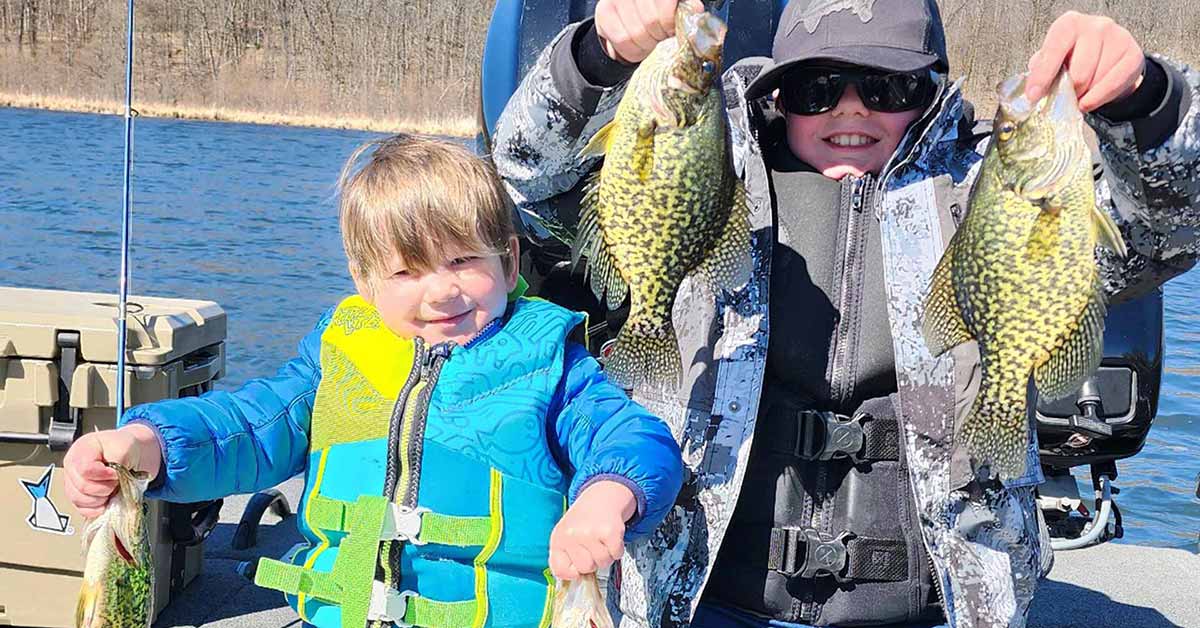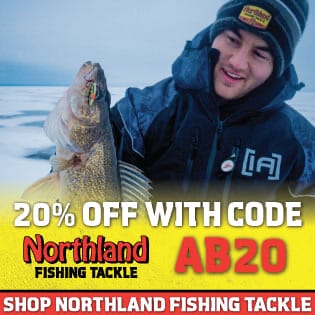Many people misconceive summer walleyes as being lethargic and difficult to catch, but that couldn’t be farther from the truth. Summer is a great time to catch big walleyes, and you can target them with a variety of different ways. To help you fully take advantage of the hot bites going on during the summer months, we reached out to seven of the top walleye pros in the Upper Midwest and asked them one simple question:
What’s your go-to technique for summer walleyes?
… some of the answers might surprise you!
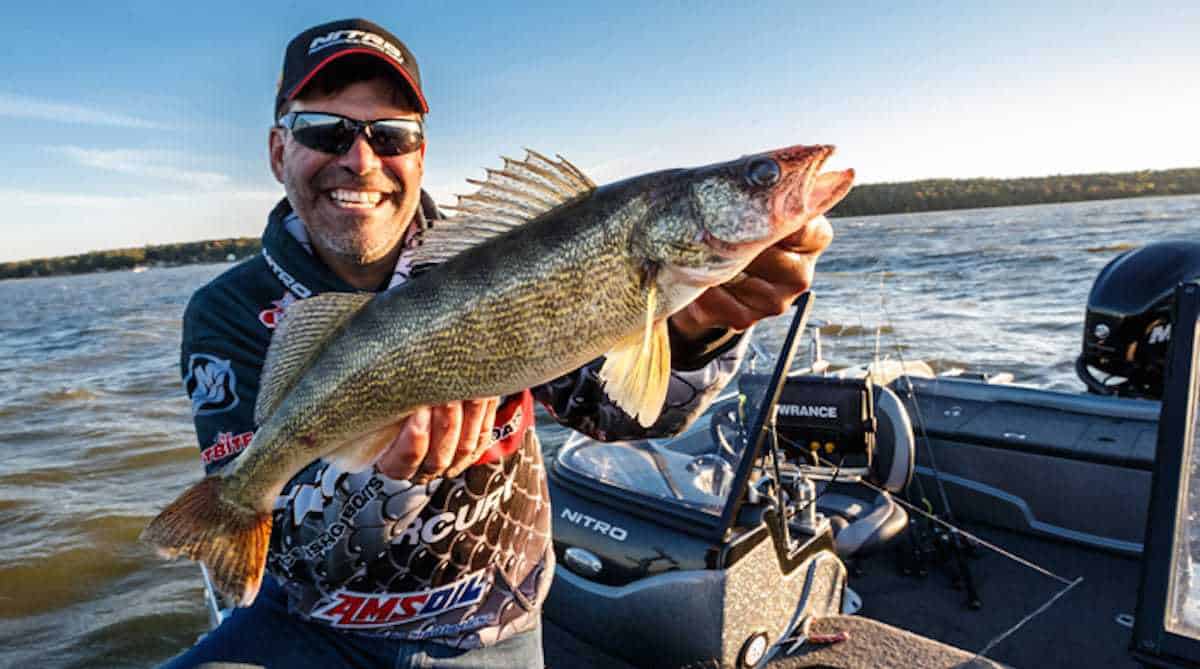
Keith Kavajecz – The Next Bite TV
Right now, my go-to would be crankbaits. I just think in the summer, the fish get spread out enough that you need to cover water, and there’s no better way to do that than trolling crankbaits. As a general rule of thumb, if you’re fishing structure you want to run the baits closer to the bottom and if you’re out in open water, you want to run them higher in the water column above the suspending walleyes. Once you’ve marked the fish on your depth finder and identified where they are hanging out, you need to experiment with different profiles, colors and actions until you figure out what the fish are looking for. I think people make a mistake trying to “match the hatch” too much, both in color and in profile. If there is already a lot of bait fish in the system, giving them something they already have a surplus of doesn’t make a lot of sense to me. I’d rather give them something unique: a different profile, maybe a gaudy color, a pink or a purple, something they don’t typically see. Now if you’re not seeing much bait on your depth finder, finding out what the natural forage is and trying to mimic that is oftentimes a good idea. All in all, I’m a fan of experimenting and letting the fish tell me what they want.
The other thing you want to consider is how fast you’re trolling. My ultimate goal is to go as fast as I can go and still consistently catch fish. If water temperatures are around 70 degrees, you should probably be going around 2.2 mph. I’ll go around 1.8 mph when it’s below 70 degrees and 2.5 mph when it’s above. It doesn’t sound like a lot, but the difference between 1.8 and 2.5 means you’re covering 25-30% more water over the course of the day, which can be huge. That’s why I’m always trying to push the envelope from a speed standpoint. If they are biting at a particular speed, try to push it, push it, push it and see what you can get away with.
One of the great things about trolling crankbaits is that they will often run the same depth no matter what speed you’re trolling. Once you’ve found a good depth zone, you can easily experiment with adjusting speeds and not have to worry about the baits changing depths on you. If you want to expedite the process of getting your cranks down to the right depth level quickly, I would recommend checking out the Precision Trolling app. I use it often and it’s saved me a lot of time out on the water.

Jason Mitchell – Jason Mitchell Outdoors
One thing that has been a slam dunk for me everywhere I go is the shallow weed bite. While many summer walleyes follow the “old playbook” and head out to deep structure as summer progresses, a certain percentage of fish will stay up in the shallow weeds all throughout the season. One thing that really plays into your favor when you’re targeting these fish is that they are mostly untouched throughout the summer! My go-to presentation in this situation is casting paddle tail swimbaits, specifically the Kalin’s Sizmic Shad. The beauty of this presentation is that it’s so simple to employ. Simply cast it out, then slowly swim it back to the boat. You don’t need to worry about jigging, popping or letting it sit — just cast and reel. You can’t do anything wrong as long as the paddle tail is thumping.
When I’m dissecting these weed beds, I’m targeting openings, lanes, troughs, weed edges and inside turns; basically any openings in the weeds that allow for room to move around. Another great spot is the water column from the top of the weeds to the surface of the water, even if it’s only a few feet of open water. Remember, the walleyes you’re going to catch using this approach are using these openings in the weeds to actively cruise water in search of food.
Many people who have never used this technique before are often intimidated by the size of the baits we use. I like to use Sizmic Shads that are 4 to 6 inches long, rigging it on a 1/4 oz Kalin’s long shank swimsuit hook. When it comes to line, I’m running a braided mainline and a fluorocarbon leader. If you need any more info on this presentation, make sure to check out the article I wrote earlier this year, “Weed Walleyes are the Meanest Walleyes”. It has a lot of good tips that will help you catch more fish with this presentation.
BONUS: Check out our Spring Walleye Guide
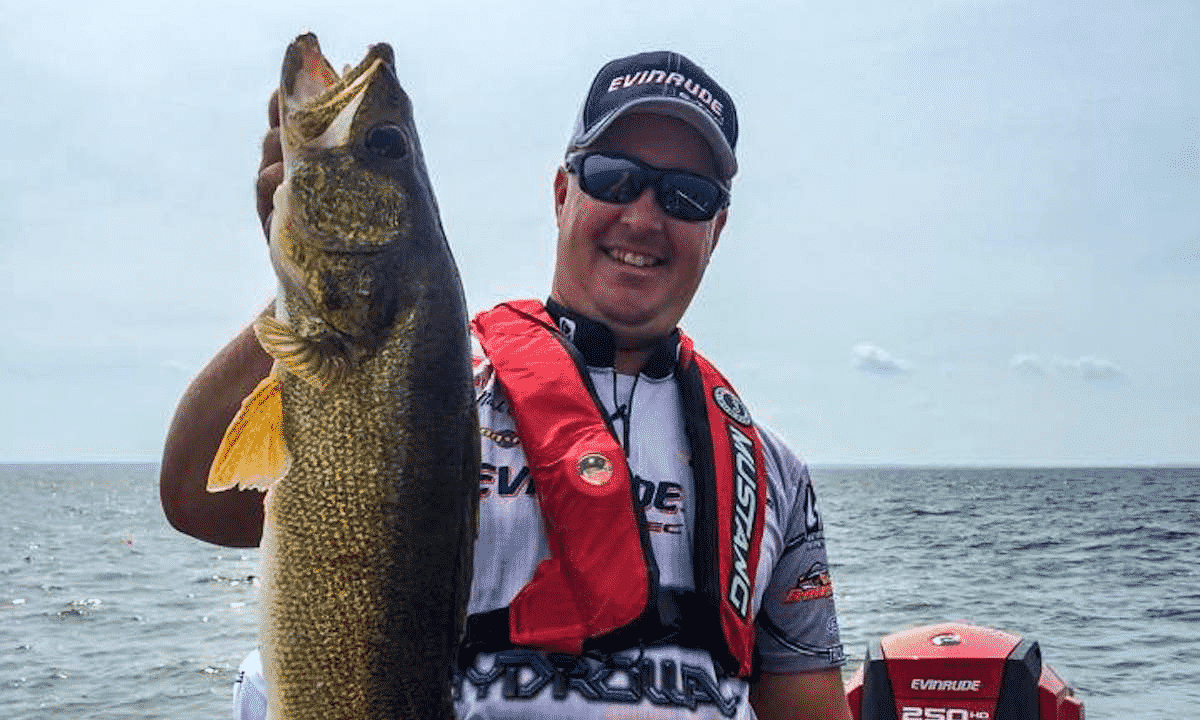
Mark Courts – Mark Courts Fishing
I travel all across the country fishing tournaments and one thing that works everywhere I go is pulling a slow death rig. It’s really a phenomenal tactic for covering water and catching summer walleyes, even when the bite gets tough. Here’s my setup: I’ll run 10/4 or 8/3 Fireline down to a 1 to 2 oz bottom bouncer. I tie all my slow death rigs with 8lb XT Trilene anywhere from 3 to 4 feet away from the bottom bouncer. I typically like to match the hatch with my bead selection, but perch patterns always work well. I’ll use 1 to 3 smaller beads (#3’s or #4’s), a chartreuse, a green and an orange bead with a small gold blade. The Mustad Super Death Hook is a good choice. Northland also makes a slow death hook that has a nice little keeper on it.
This presentation is excellent for covering water. I’ll fish it anywhere from 0.6 to 1.1 mph depending on the situation. You can fish this rig all over the lake, whether you’re on weedlines, mud flats or gravel. One issue that many anglers having during the summer months is perch constantly stealing the bait off their rigs. I combat this problem by using artificials. My go-to is the Gulp! 4 inch Crawler in watermelon pearl — it does an amazing job imitating a wounded baitfish. Another one of my favorites is the Gulp! 3 inch Killer Crawler in the “natural” color. It looks exactly like a pinched off nightcrawler. I almost always use artificial baits when I’m pulling slow death rigs because they save me from wasting time re-baiting over and over again.
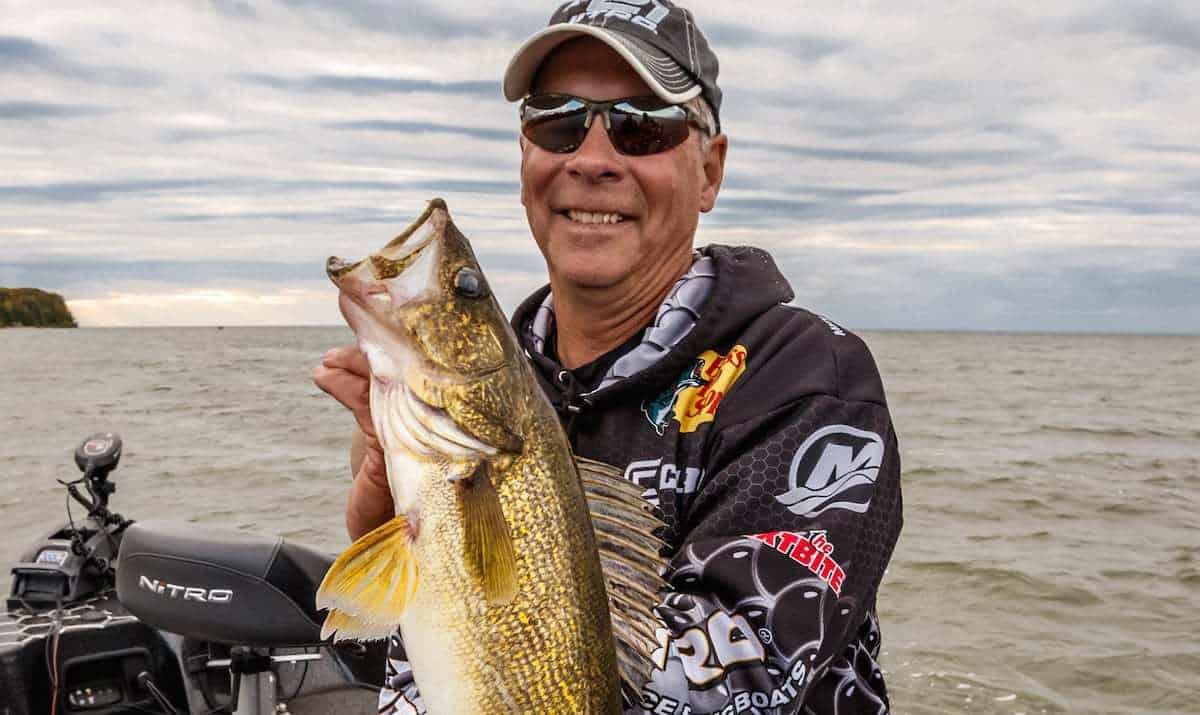
Gary Parsons – The Next Bite TV
While I love to catch walleyes on crankbaits and slow death during the summer, the bite I look forward to the most is casting Shiver Minnows; it’s my most consistent technique from lake-to-lake for summer walleyes. Once water temperatures get up over 70 degrees, this bite gets really tough to beat. I look for deepwater rock, sunken humps and rises off the bottom in anywhere from 12 to 30 feet of water, working the tops and sides of the these various structures. Cast it out and let it sink down to the bottom, then make a big sweep with your rod tip and let the bait fall on a slack line. It’s important that the bait free-falls immediately after the sweep, otherwise you’ll disrupt the “walk-the-dog” action of the bait. Once the Shiver Minnow gets about a foot off the bottom, give it another sweep, let it fall and continue your retrieve back to the boat.
Many people talk about this being a reaction bite, but I don’t necessarily buy into that thinking. More than anything, I think walleyes see it as a dying minnow, which simply represents an easy meal for them. The reason I believe that is because there have been times where I will miss a bite and that same fish will bite again, again and again until it’s hooked up. That isn’t reaction, that is a fish hunting and looking for a meal. If you want some more information on Shivering, you can check out the two videos below.
– The Right Gear for the Shivering Tactic
– NextBite TV: Shivering for Walleyes on Escanaba
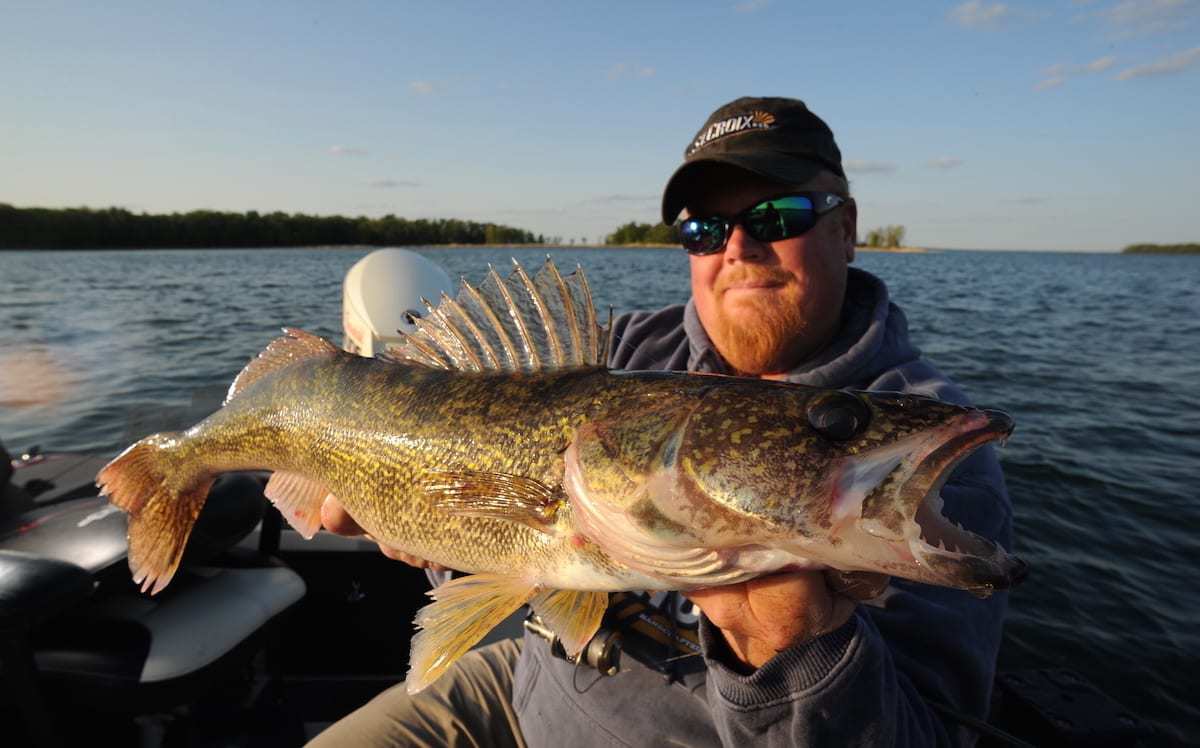
Brian Brosdahl – Bro’s Guide Service
I’m a big fan of pulling spinner rigs when I’m targeting summer walleyes — it’s an extremely effective tactic for catching walleyes during the heat of the summer. I’ll use a Northland Microblade Spinner rig with a long shank hook. The long shank hook is key because it helps with hookups and it allows you to thread your crawler up the hook. Speaking of bait, I will use nightcrawlers most of the time. If perch become an issue in the areas I’m fishing, I’ll switch to leeches or even plastics like an Impulse Paddle Minnow or a jig worm. Both plastics and leeches are much tougher for the perch to steal, whereas they can lick crawlers off the hook with ease. For colors, you can’t go wrong with crayfish patterns or perch (Firetiger) patterns. I’ll go with 8 beads on most of my rigs, but I’ll downsize to 4-6 if I’m going finesse. Crawfish patterns usually include orange, brown, gold, blue and green, while perch has some combination of orange, black, green and gold. I typically use #4 blades, Indiana or Colorado, in gold or silver
When I’m running spinners, I’ll use a bullet sinker or a bottom bouncer depending on the conditions. With the bullet sinker, I’ll use whatever weight I need to get my rig in the right depth level, usually 1/8 or 1/4 oz. If I start snagging the bottom or hitting the tops of the weeds too much, I’ll lighten it up. One thing I love about the bullet weight is that I can pitch it back behind the boat after I catch a fish. That allows me to place my bait back into the school of walleyes without resetting my boat and trolling back over them. One of my favorite bottom bouncer is the Rock-Runner from Northland Tackle. They make them in Parakeet and Sunrise colors, both of which I use. The color of the bouncer draws the fish in, and then the spinner comes in and seals the deal.
Line choice for me is pretty simple: I’m using a braided mainline 90% of the time with a 12-16 pound fluorocarbon leader back behind the bottom bouncer. If the water is extremely clear (17-22 feet of visibility), I’ll go to 10 pound test on the leader. My trolling speed is usually right around 1.0-1.2, but I’ll crank it up to 1.4 every now and then. One thing that’s important to remember is that it’s not called “bottom dragging” — it’s called bottom bouncing, so make sure you lift your rig off the bottom a foot or so when you’re trolling. This keeps your spinner up off the bottom. I think a lot of people drag their rigs too low and the walleyes have a tough time physically grabbing it in certain conditions.
BONUS: Top 8 Walleye Lakes in Minnesota

Chad Schilling – Oahe Wings & Walleyes
My go-to summer walleye technique would have to be trolling a Pro Tackle Propeller Rig with a bottom bouncer. The propeller itself is really just a tiny spinner, but it does an excellent job triggering bites. As far as the bottom bouncer goes, I’m usually using a 2-ouncer, but I’ll change it up as necessary to whatever keeps my line at a 45 degree angle while trolling. I generally tip the rig with a half a crawler. When the bite gets hot and heavy, I’ll switch over to a plastic; really an Berkley bait will work, though one of my favorites is the Rib Worm. I have also had a lot of success on paddle tails when the bite is especially furious. It’s very important to run a long-shank hook for both the crawlers and the plastics. The Aberdeen hooks that come on the Pro Tackle Propeller Rigs are exactly what I’m looking for in these fishing situations.
Ideally, you’re trying to fish this rig as quickly as possible. I generally start around 1 mph and work my way up from there until the bite starts to slow down, which is usually around 1.5-1.7 mph. The faster you go, the more water you can cover, so you’re always aiming for that higher number if possible. This presentation really shines in rivers and reservoirs. The only place I haven’t had a lot of success doing this is on the Great Lakes, and that’s probably just because I haven’t done it enough there. When you’re running this rig on a river system, you’ll typically need to troll it downstream. If this is the case, your #1 concern is making sure the propeller is spinning good. Don’t worry if you need to go 3-4 mph to get some good rotation; you’re not going to out-swim the fish. They’ll come and get it if they want it.
One little trick that will help you with hookup percentage: leave your pole in the rod holder and let the fish and your trolling speed do the hooking for you. Let the walleye hit it and load up the rod, then pick it up and give it a very light, short sweep and crank it up. With the way these fish hit this rig, you’ll only hurt yourself with a big hook set.
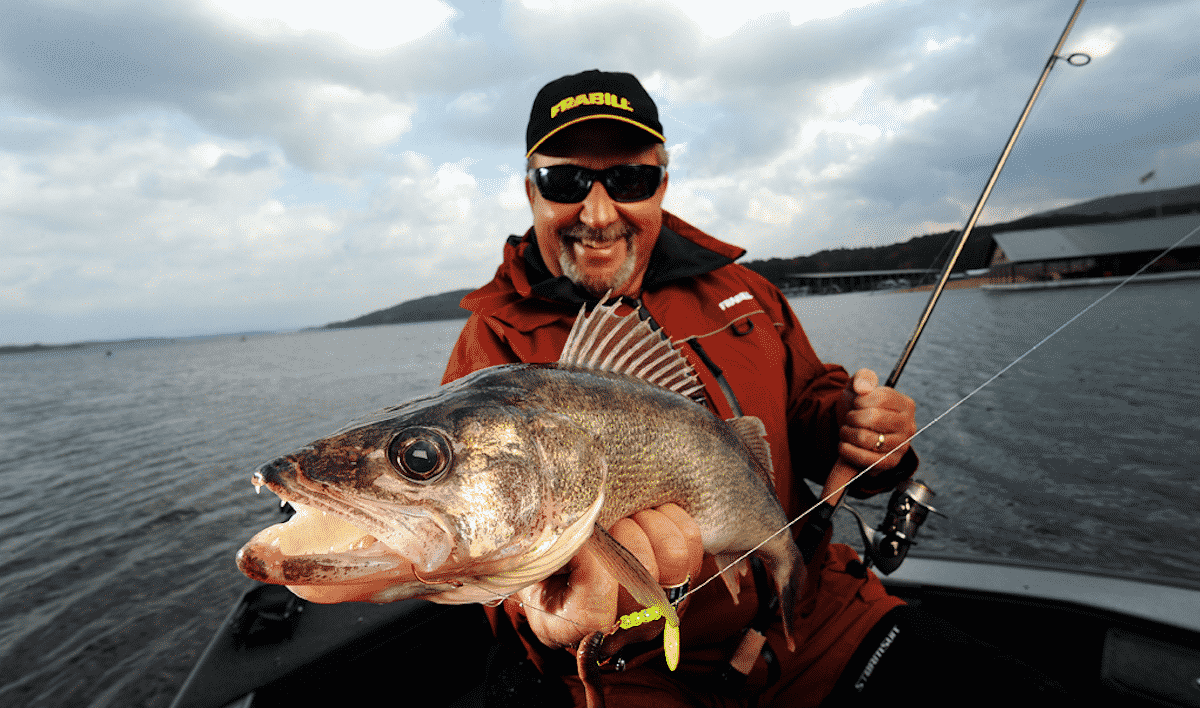
Tom Neustrom – Minnesota Fishing Connections
A lot of people don’t understand how many walleyes live shallow all throughout the season, especially in lakes with a little bit of color or turbidity. One of my favorite presentations for summer walleyes is running spinner rigs over isolated patches of cabbage up shallow. It is a presentation that’s overlooked by many anglers who spend the summer months out fishing deep structure. What I’m looking for is isolated patches of weeds in 5-10 feet of water with baitfish around it. If there’s bait in there, the walleyes are there, too — I use my Helix units to mark and identify potential walleye forage.
Here’s my spinner rig setup: I use a 3/16th oz cone-shaped sinker with a 30-36 inch 14# fluorocarbon leader. When it comes to blades, I use #2’s, #3’s and #4’s, with the #3 being my go-to; I’m a big fan of both gold and hammered gold, though I will occasionally use silver when the water is really clear. As far as bait goes, I’ll typically use a minnow or a half a crawler. When I’m running a minnow, I’ll use a single 1/0 VMC longshank hook in gold, otherwise, I think VMC makes some great spinner rigs that I use with a two-hook harness. We run these rigs from 1 to 1.25 mph — just fast enough to keep them up out of the cabbage beds. You want the rig running just above the weeds, not down in them.
Bonus Info!
Hungry for more information on summer walleyes? — One of the most popular videos on our site has been “3 Ways to Trigger Aggressive Walleye Strikes in Summer“. It’s a must-watch if you enjoyed this article. Sometimes “timing” can play a big part in catching fish. If you’re interested in some tips to help you dial in your timing during the summer months, read this article.
If you need some spring walleye tips, make sure to check out the Spring Walleye Guide we put together. It has all the info you’ll ever need!






